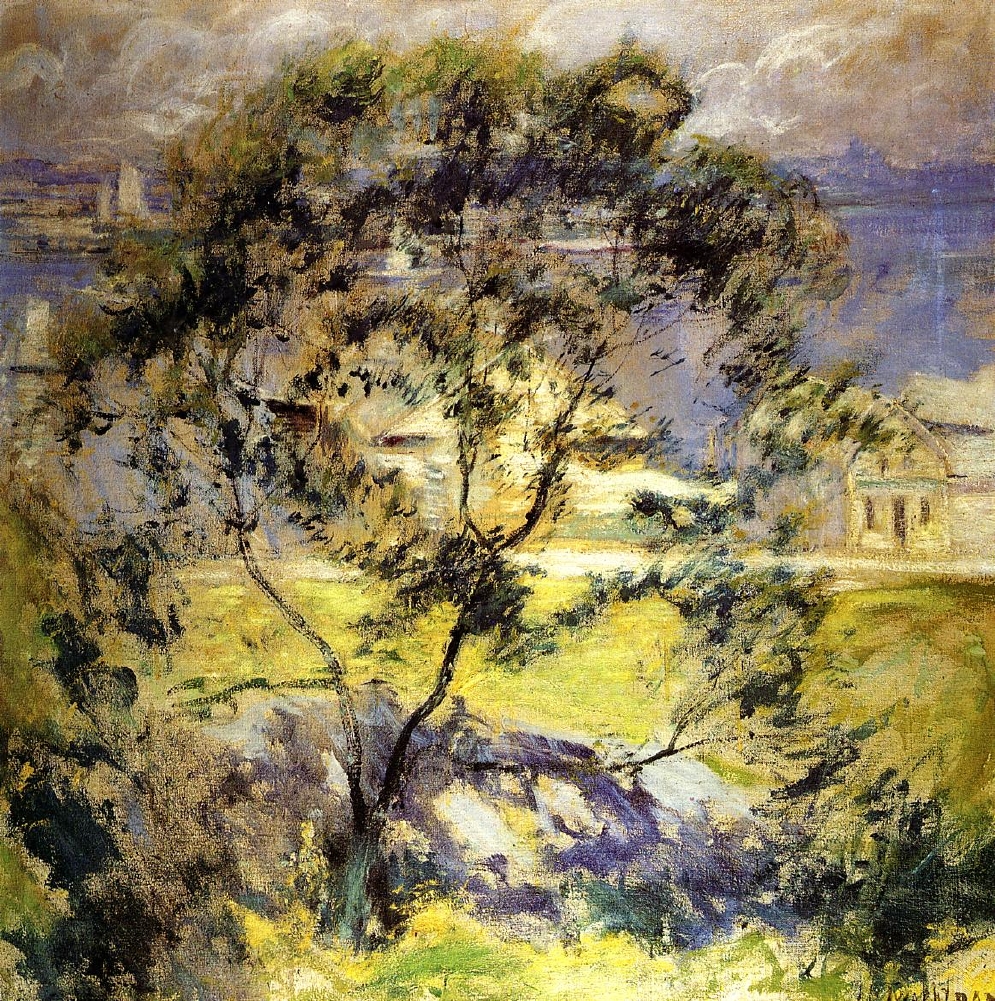John Henry Twachtman, Wild Cherry Tree, c1901
John Henry Twachtman (1853-1902) was an American painter known for his Impressionist landscapes. Born in Cincinnati, Twachtman received early training there before going to Europe to study at the Academy of Fine Arts in Munich and then at the Académie Julian in Paris. His earliest work shows a fairly standard American style of landscape painting, but he soon developed a very personal style of loose brushwork and powerful atmosphere. Many of his works have a cast of Tonalism, and American technique wherein the artist employs a veil of misty color. Although he did few figure paintings, he demonstrates skill there as well. His landscapes show a deep appreciation for the natural world. Wild Cherry Tree is in some ways quite in line with Twachtman's style and career, but there is something unusual and singular about it as well. The focus and composition are somewhat odd, with the tree placed so near the foreground and blocking the other elements of the scene. Perhaps most striking is the use of black brushstrokes at the edges of the foliage, which seems to particularly emphasize the wildness of the cherry tree. While there is a suggestion of wind in the corresponding slant of the tree, grass, clouds, and water, it almost seems like that movement is caused by the power of the tree, pulling the rest with it. Meanwhile, Twachtman includes a small village that is obscured and dwarfed by the tree. All of these elements create a piece of great power and interest, where we want to stay and watch this intense tree sway in the wind. It also worth noting that the blossoms are widely considered the most beautiful part of a cherry tree, but Twachtman chose to paint one not in bloom, so that the green and black of the leaves become central and hold our interest instead.

No comments:
Post a Comment